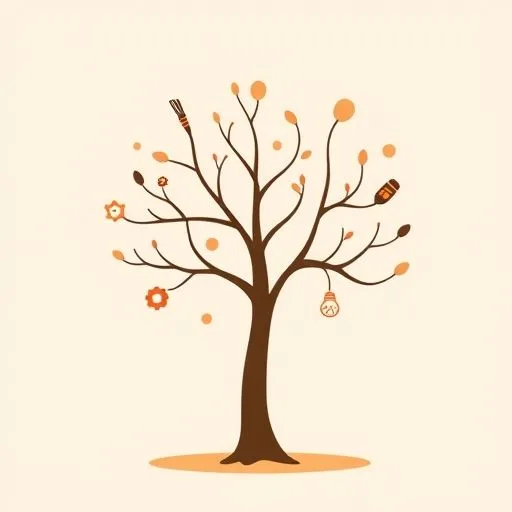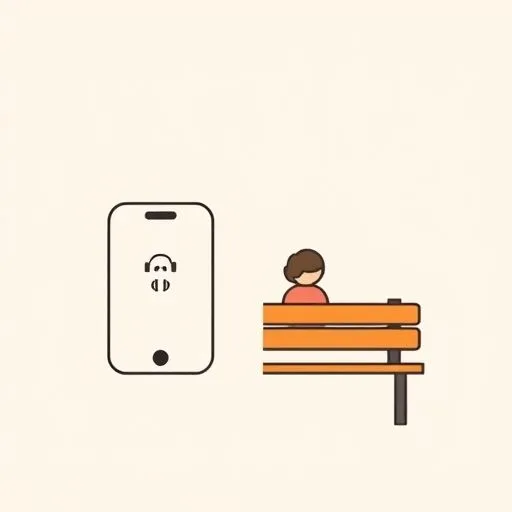
Have you heard about Critterz? This OpenAI-animated film created entirely by AI promises to revolutionize filmmaking. When I discovered this, I immediately wondered: how do we prepare our kids for a world where AI creates art and stories? As parents navigating this technological shift, we face both challenges and opportunities. Let’s explore how to raise children who adapt and excel in this brave new AI landscape!
How is AI Revolutionizing Hollywood – and What It Means for Our Kids?

Picture this: a feature-length animated film created in just nine months with a fraction of traditional budgets. Sound like science fiction? Welcome to Critterz, OpenAI’s ambitious project that’s turning heads in Hollywood and beyond!
This feels like a storytelling earthquake—everything’s shaking up! What’s truly mind-blowing? This isn’t some distant concept – it’s happening right now, with plans to premiere at Cannes in 2026!
As parents, we watch these developments with a mix of awe and anxiety. When we see AI tools generating stunning visuals, crafting compelling narratives, and reducing production timelines dramatically, we can’t help but wonder – what does this mean for our children’s future careers and creative opportunities?
The excitement is contagious, but so is the uncertainty. After all, if AI can create an entire film, what skills will our kids need to thrive?
The answer isn’t about choosing between AI and human creativity – it’s about embracing both.
When technology advances this rapidly, our children benefit most when they learn to harness these tools while developing uniquely human abilities that machines simply can’t replicate.
The Hollywood Job Concern: Fact or Fear?

Let’s talk straight – there are real concerns about AI’s impact on jobs in entertainment industries. Recent studies paint a startling picture: about 21.4% of film, television, and animation jobs – roughly 118,500 positions – could be affected by generative AI by 2026.
That’s not just numbers on a page; those represent real people with families and dreams. Jobs in 3-D modeling, character design, voice acting, and animation are particularly vulnerable.
Before we dive into solutions, let’s sit with that question for a second—because meaningful change starts with honest curiosity.
When we hear about this as parents, our protective instincts kick in immediately. We start picturing our own children entering a workforce that might look dramatically different from what we knew.
But here’s the perspective shift we need: every technological revolution has historically created new opportunities even as it transforms existing roles. Think about how computers changed the creative process – didn’t they enhance rather than eliminate artistic careers?
AI in education is becoming a powerful tool that allows more children to experiment with digital creation from an earlier age.
Our children might not just compete with AI – they’ll collaborate with it, using these incredible tools to bring their wildest creative visions to life. The key lies in teaching them to be adaptable, innovative, and human in ways that complement rather than compete with artificial intelligence.
How Do We Raise Kids Who Collaborate With AI?

So how do we prepare our kids for this AI-infused landscape? I believe the answer lies in developing skills that make our children uniquely valuable.
First and foremost, nurture creativity that comes from human experience – the messy, complicated, emotional stuff that AI can’t replicate. Encourage drawing not just digitally but with actual crayons on paper. Foster storytelling sparked by real-life adventures, not just prompt engineering. Celebrate those moments when your child creates something simply because they felt inspired.
Second, introduce them to AI in education opportunities as creative partners rather than replacements. There are incredible tools now that let kids collaborate with AI to bring their ideas to life in ways previous generations couldn’t imagine.
Imagine your child describing a character to an AI system and watching it bring their vision to life – that’s not replacing creativity; it’s amplifying it! (Seriously, I was blown away!)
Third, develop emotional intelligence – the ability to understand, empathize, and connect with others. Our daughter recently learned this beautifully when her AI-generated art sparked a conversation about feelings that none of us expected. These human connections? They’re what machines can’t touch and what will set our kids apart.
Fourth, teach adaptability. The world is changing rapidly, and our children will need to evolve with it. Encourage curiosity, persistence, and the courage to try new things – even when they’re challenging.
Last weekend, my daughter and I turned her AI sketch into a stop-motion adventure using kimchi jars from our fridge—talk about creative recycling!
How Can We Balance Technology and Family Time?

As we navigate this AI landscape together, let’s remember what truly matters in our parenting journey. Technology can enhance our children’s experiences, but it can’t replace the human connections that shape who they become.
We’ve found that these daily journeys together create irreplaceable moments – no AI algorithm could replicate the way she notices a new flower blooming or shares a funny observation about her day.
The same applies to our approach with AI tools. When we introduce technology thoughtfully, as a complement to real-world experiences rather than a replacement, our children benefit most.
Set boundaries around screen time, yes – but also explore how AI in education can spark creativity and learning in exciting ways. The research shows that the most effective approach involves guided use of these technologies, not avoidance.
Perhaps most importantly, let’s model the balanced relationship with technology that we want our children to develop. Show them how we use AI tools to enhance our work and creativity while still prioritizing face-to-face conversations, outdoor adventures, and quiet moments of reflection.
The magic happens in that balance – when technology serves human needs rather than the other way around.
Remember, the goal isn’t to raise kids who can out-compete AI at its own game. It’s to raise kids who know what makes them human.
How Will You Navigate Your Family’s AI Journey?

As we wrap up this exploration of AI’s impact on our children’s future, I invite you to reflect on your own family’s journey through this technological landscape. What excites you most about the possibilities AI offers? What concerns keep you up at night? How are you helping your children develop the skills they’ll need to thrive?
So, what’s your family’s wildest AI experiment? Share below—we’ll keep the conversation rolling all the way from our doorstep to school!
Remember, we’re pioneers in this new era, charting a course for our children that no previous generation has navigated. There’s no perfect playbook, but there’s incredible power in sharing our wisdom, supporting one another, and staying committed to raising kids who are not just prepared for the future but eager to shape it with creativity, compassion, and courage.
Together, we can turn the challenges of this AI revolution into opportunities for growth, connection, and incredible creativity.
Our children’s future is bright, and with thoughtful guidance from all of us, they’ll not only adapt to the age of AI but help define what it means to be human within it.
Source: OpenAI is on board with a feature-length generative AI film – ‘Critterz’ raises concerns of job loss in Hollywood, Windows Central, 2025/09/11
